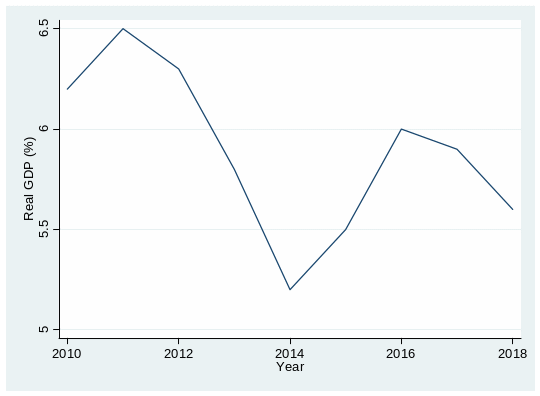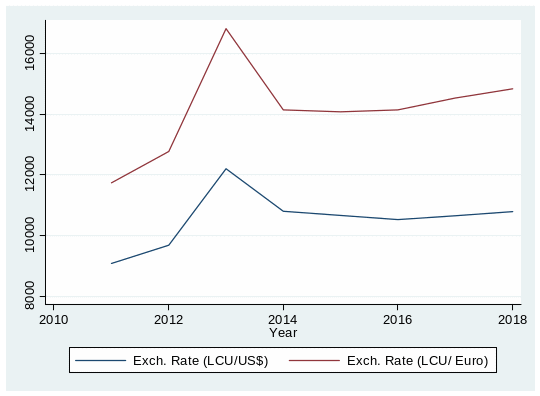Introduction
Indonesia is one of the emerging market economies in the Asia-Pacific region. The country has a large population with a strong purchasing power. In addition, the government has focused on implementing economic reforms to attract foreign capital. In this respect, this paper will provide a comprehensive analysis of the risks associated with doing business in Indonesia. The analysis will focus on political, economic, legal, and technological risks. Social and environmental risks will also be analyzed. Based on the analysis, recommendations concerning the attractiveness of the Indonesian market will be made.
Political Risks
Indonesia realized a major political achievement in 2004 when it successfully adopted a democratic system of governance. Democracy has created a favorable business environment by protecting basic human rights and preventing violent political confrontations (MarketLine, 2013). Nonetheless, corruption in the public and private sectors is still a major risk in Indonesia. Generally, businesses incur high costs because they have to bribe government officials to secure contracts and licenses.
Red-tapism is another major risk that investors face in Indonesia. It takes nearly ten complicated procedures and 48 days to start a business in the country (MarketLine, 2013). However, in the ASEAN region it takes only 7 procedures and approximately 37 days to start a business. Red-tapism promotes corruption and increases the cost of doing business in the country.
Indonesia has joined the World Trade Organization (WTO) and the Association of Southeast Asian Nations (ASEAN), thereby enabling its traders to avoid trade barriers in the international market (IHS, 2014). For instance, table 1 shows that major economies such as Japan, Singapore, Malaysia, and the US are Indonesia’s major export destinations. However, Indonesia’s worsening foreign relations is likely to prevent access to external markets in future. For instance, Indonesia’s relations with Australia have worsened since 2013. This is likely to have a negative effect on trade between the two countries.
Economic Risks
Indonesia achieved an impressive average annual GDP growth rate of 5.4% between 2000 and 2012 (MarketLine, 2013). Figure 1 shows that the country’s GDP growth rate is likely to remain above 5% in the next four years. Growth will be sustained by favorable factor endowment, which includes huge oil and gas deposits. Generally, improved economic growth will boost domestic demand, thereby increasing the profitability of local firms.
Indonesia’s financial system is very stable since it had a capital adequacy of 18.48% and a return on assets rate of 3% in 2013 (MarketLine, 2013). Thus, the risk of a financial crisis in the country is low. However, Indonesia’s headline inflation rose to 8.8% in the third quarter of 2014. The inflation rate is expected to worsen due to import restrictions and elimination of subsidies in the medium term. The resulting reduction in demand will expose businesses to the risk of making losses.
Indonesia has a huge current account deficit, which is expected to persist in the next four years (MarketLine, 2013). The deficit will increase due to the expected increase in domestic demand, which will lead to a rise in imports (IHS, 2014). The country’s exchange rate is expected to continue to depreciate due to the current account deficit as shown in figure 2 (World Bank, 2013). This will hurt businesses by increasing the cost of importing intermediate goods. However, the depreciation of the currency is also likely to boost the competitiveness of locally produced goods in the international market. This will improve profitability in the export sector.
Social Risks
Indonesia has a population of about 240 million people (NPFPB, 2012). Majority of the population (66.5%) falls in the age bracket of between 15 and 64 years. In this regard, the country has a large labor force, which enables businesses to access adequate skills and talent. However, labor militancy is a major risk in Indonesia. The rise in labor unions in the country has enabled workers to demand for high wages. As a result, the government has implemented high minimum wage rates and generous terminal packages in all sectors in the economy (IHS, 2014). Although the wage increments benefit workers, they increase the cost of production.
Currently, the unemployment rate in Indonesia is approximately 6.3% (IHS, 2014). The high rate is likely to persist in the long-term due to rigid labor laws. The resulting increase in poverty will force the government to increase its spending on social protection programs to avert political unrest. However, this will be a risk to businesses since it will divert spending away from development projects such as road construction, which are required to boost economic activities. Moreover, a high unemployment rate will reduce profitability by reducing domestic demand (BMI, 2012).
Technological Risks
Indonesia is among the leading countries in technological innovation. This achievement is attributed to the availability of adequate scientists who have the expertise that is required to achieve innovation (Sukara & Syahrul, 2012). However, the future of innovation in the country is uncertain due to two main risk factors. First, the country’s legal system is not able to protect intellectual property rights. This means that businesses in the country are exposed to the risk of losing exclusive ownership of their intellectual properties, which in turn discourages innovation. For instance, software piracy in the country has increased by nearly 86% in the last three years. Second, investment in research and development is less than 1% of the country’s GDP. This low investment will limit access to new technologies that companies need to improve their competitiveness.
Environmental Risks
Environmental degradation presents serious risks to businesses in Indonesia. One of the major environmental problems in the country is rapid deforestation. The country loses approximately two million hectares of forest annually. The loss is attributed to increased production of palm oil. Rapid deforestation increases desertification and soil erosion. Air and water pollution is another major environmental problem in Indonesia. Emission of greenhouse gasses and disposal of industrial wastes are not regulated in Indonesia due to the weak regulatory environment (Measey, 2010). Environmental degradation is a risk because it threatens the sustainability of production in the country. For instance, desertification will limit the amount of water that will be available for production in the industrial and agricultural sectors. Moreover, disposal of wastes and access to raw materials will not be sustainable once the country exceeds its bi-capacity.
Legal Risks
One of the major legal risks in Indonesia is poor enforcement of contracts. Specifically, corruption in the legal system limits access to justice. As a result, businesses often lose their investments in capital-intensive sectors whenever they form joint ventures with the government or private firms (Wells, 2007). Another legal risk in the country is excessive control of foreign direct investment. For instance, FDI in the air and land transportation is limited to 49%. This means that foreign investors in Indonesia are likely to be minority shareholders in companies that operate in industries in which FDI is restricted (Otsuka, Thomsen, & Goldstein, 2011). Being a minority shareholder is a risk because it limits participation in decision-making processes.
Recommendations
First, a company that intends to expand its global market share should consider joining the Indonesian market. This recommendation is justified by the country’s stable macroeconomic and political environment (BMI, 2009). Rapid economic growth in the country is an opportunity to foreign firms to increase their sales because it ensures a strong domestic demand. Furthermore, Indonesia is a huge market due to its large population.
Second, foreign firms should enter the Indonesian market through exportation. Since Indonesia is a member of the WTO, companies that export to it are not likely to face unfavorable trade barriers. Exportation will also help in avoiding the costs associated with looking for a joint venture partner in order to join the country through FDI. Moreover, it will reduce the high costs and delays in starting a business in the country.
Finally, research and development centers should be located outside Indonesia. This will prevent loss of intellectual property rights that is likely to arise due to the country’s weak legal system. Moreover, increased investment in innovation will help in overcoming competition since local firms hardly invest in research and development.
Conclusion
The main risks associated with doing business in Indonesia include high labor costs, poor enforcement of the law, and environmental degradation. In addition, joining the market is difficult due to excessive control of FDI. Access to innovative technologies is also limited due to inadequate investment in research and development. Nonetheless, foreign firms should consider serving the market due to its large size. Moreover, the market is characterized by economic and political stability, which promotes the growth of businesses.
Appendix



References
BMI. (2012). China retail outlook. London, England: Business Monitor International Ltd.
BMI. (2009). Indonesia risk summary. London, England: Business Monitor International Ltd.
IHS. (2014). Country reports: Indonesia. Englewood, CO: IHS Global Inc.
MarketLine. (2013). PESTEL country analysis report: Indonesia. Sydney, Australia: MarketLine Ltd.
Measey, M. (2010). Indonesia: A valuable country in the face of climate change. Global Majority Journal, 1(1), 31-45.
NPFPB. (2012). Indonesia demographic and health survey 2012. Jakarta, Indonesia: National Population and Family Planning Board.
Otsuka, M., Thomsen, S., & Goldstein, A. (2011). Improving Indonesia’s investment climate. Paris, France: OECD Directorate.
Sukara, E., & Syahrul, A. (2012). Indonesia’s science funding and review of quality of science. Beijing, China: LIPI.
Wells, L. (2007). Private power in Indonesia. Bulletin of Indonesian Economic Studies, 43(3), 341–63.
World Bank. (2013). Slower growth, high risks. Jakarta, Indonesia: World Bank Group.